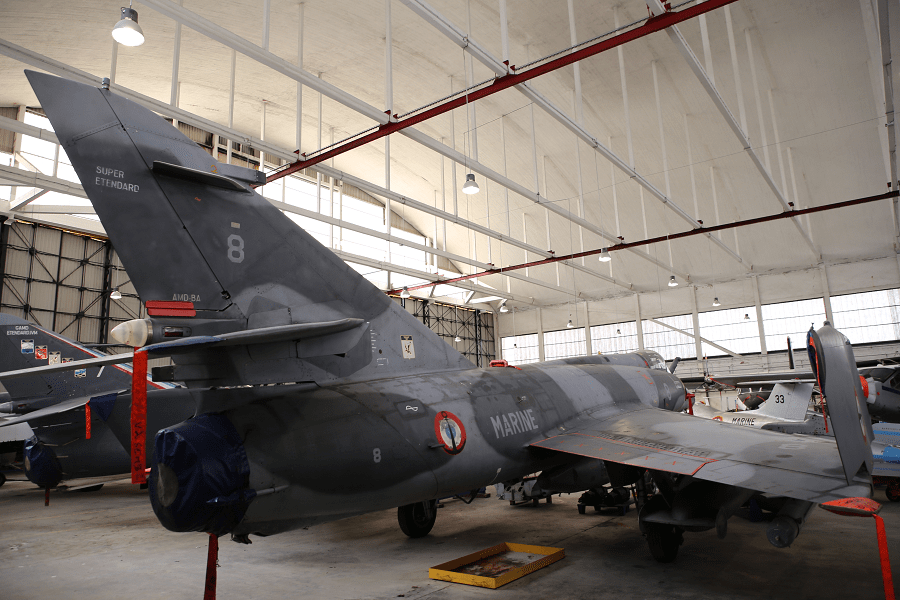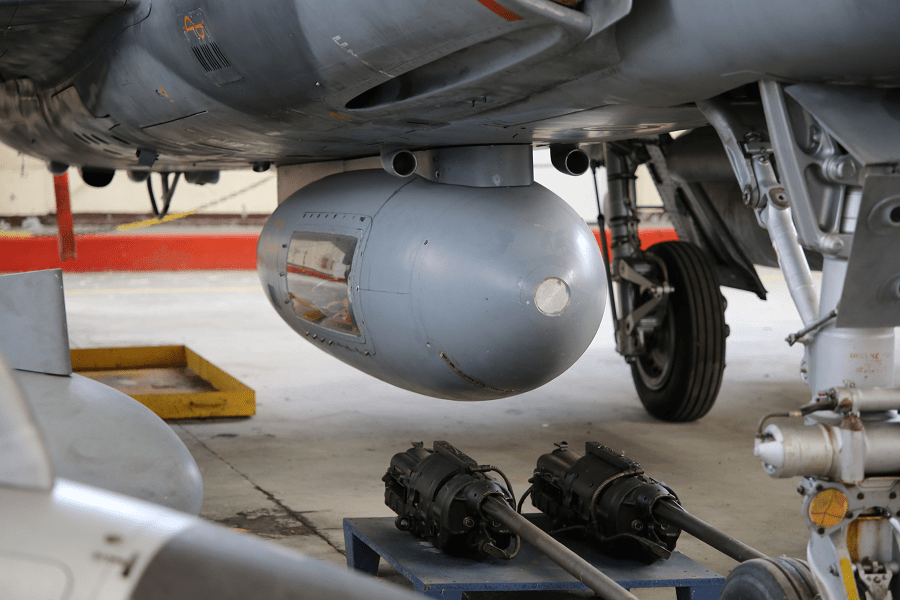Dassault-Breguet Super Étendard
The Dassault-Breguet Super Étendard (Étendard is French for “battle flag”) is a French carrier-borne strike fighter aircraft designed by Dassault-Breguet for service with the French Navy.
The aircraft is an advanced development of the Étendard IVM, which it replaced. The Super Étendard first flew in October 1974 and entered French service in June 1978. French Super Étendards have served in several conflicts such as the Kosovo war, the war in Afghanistan and the military intervention in Libya.
The Super Étendard was also operated by Iraq (on a temporary lease) and Argentina, which both deployed the aircraft during wartime. Argentina’s Navy use of the Super Étendard and the Exocet missile during the 1982 Falklands War led to the aircraft gaining considerable popular recognition.
The Super Étendard was used by Iraq to attack oil tankers and merchant shipping in the Persian Gulf during the Iraq-Iran War. In French service, the Super Étendard was replaced by the Dassault Rafale in 2016.
The Super Étendard is a development of the earlier Étendard IVM which had been developed in the 1950s. The Étendard IVM was originally to have been replaced by a navalised version of the SEPECAT Jaguar, designated as the Jaguar M; however the Jaguar M project was stalled by a combination of political problems and issues experienced during trial deployments on board carriers.
Specifically, the Jaguar M had suffered handling problems when being flown on a single engine and a poor throttle response time that made landing back on a carrier after an engine failure difficult. In 1973, all development work on the Jaguar M was formally cancelled by the French government.
There were several proposed aircraft to replace the Jaguar M, including the F-4 Corsair and the Douglas A-4 Skyhawk. Dassault pulled some strings with the French government and produced its own proposal to meet the requirement. According to Bill Gunston and Peter Gilchrist, Dassault had played a significant role in the cancellation of the Jaguar M with the aim of creating a vacancy for their own proposal – the Super Étendard.
The Super Étendard was essentially an improved version of the existing Étendard IVM, outfitted with a more powerful engine, a new wing and improved avionics. Dassault sold its plane as the only fully French-made candidate, and as cheaper than the other contestants, using modern technology already proven in existing Dassault planes. Dassault’s Super Étendard proposal was accepted by the French Navy in 1973, leading to a series of prototypes being quickly assembled.
The first of three prototypes to be built, an Étendard IVM which had been modified with the new engine and some of the new avionics, made its maiden flight on 28 October 1974. The original intention of the French Navy was to order a total of 100 Super Étendards, however the order placed was for 60 of the new model with options for a further 20; further budget cuts and an escalation in the aircraft’s per unit price eventually led to only 71 Super Étendards being purchased. Dassault began making deliveries of the type to the French Navy in June 1978.
In the first year of production, 15 Super Étendards were produced for the French Navy, allowing the formation of the first squadron in 1979. Dassault produced the aircraft at a rough rate of two per month.
The Argentine Navy was the only export customer. Argentina placed an order for 14 aircraft to meet their requirements for a capable new fighter that could operate from their sole aircraft carrier. In 1983, all manufacturing activity was completed, the last delivery to the French Navy taking place that year.
Design
The Super Étendard is a small, single-engined, mid-winged aircraft with an all-metal structure. Both the wings and tailplane are swept, with the folding wings having a sweepback of about 45 degrees, while the aircraft is powered by a non-afterburning SNECMA Atar 8K-50 turbojet with a rating of 49 kN (11,025 lbf). Its performance was not much better than the Étendard IV, but its avionics were significantly improved.
The main new weapon of the Super Étendard was the French anti-shipping missile, the Aérospatiale AM 39 Exocet. The aircraft had a Thomson-CSF Agave radar which, amongst other functions, was essential to launch the Exocet missile. One of the major technical advances of the Super Étendard was its onboard UAT-40 central computer; this managed most mission-critical systems, integrating navigational data and functions, radar information and display, and weapons targeting and controls.
In the 1990s, significant modifications and upgrades were made to the type, including an updated UAT-90 computer and a new Thomson-CSF Anemone radar which provided nearly double the range of the previous Agave radar.
Other upgrades at this time included an extensively redesigned cockpit with HOTAS controls, and airframe life-extension work was undertaken; a total of 48 aircraft received these upgrades, at a rate of 15 per year. During the 2000s, further improvements included significantly improved self-defence ECM capability to better evade enemy detection and attacks, cockpit compatibility with night vision goggles, a new inertial data system partly integrating GPS, and compatibility with the Damocles Laser designator pod.
The Super Étendard could also deploy tactical nuclear weapons; initially these were unguided gravity bombs only, however, during the 1990s the Super Étendard was extensively upgraded, enabling the deployment of the Air-Sol Moyenne Portée, a ramjet-powered air-launched nuclear missile.
The aircraft was also refitted with the ability to operate a range of laser-guided bombs and, to enable the type to replace the retiring Étendard IV in the reconnaissance mission, the Super Étendard was fitted to carry a specialist reconnaissance pod as well. However, the aircraft is unable to perform naval landings without jettisoning unexpended ordnance.
Country: France
First flight: 29th October 1974
Crew: 1
Length: 14.31 m (46 ft 11 in)
Wingspan: 9.6 m (31 ft 6 in)
Height: 3.86 m (12 ft 8 in)
Powerplant: 1 × Snecma Atar 8K-50 turbojet
Max speed: 1,205 km/h (749 mph, 651 kn)
Range: 1,820 km (1,130 mi, 980 nmi)
Ceiling: 13,700 m (44,900 ft)
Weight: 6,500 kg (14,330 lb)
Armament: 2× 30 mm DEFA + 4× Matra rocket + 1× AM-39 Exocet Anti-shipping missile + 1× Air-Sol Moyenne Portée nuclear armed missile + 2× Matra Magic Air-to-air missile + 1 × AN-52 free-fall nuclear bomb
Bourget Museum (Paris, France), Rochefort aviation museum (Rochefort) and Montelimar museum (Montelimar)




























